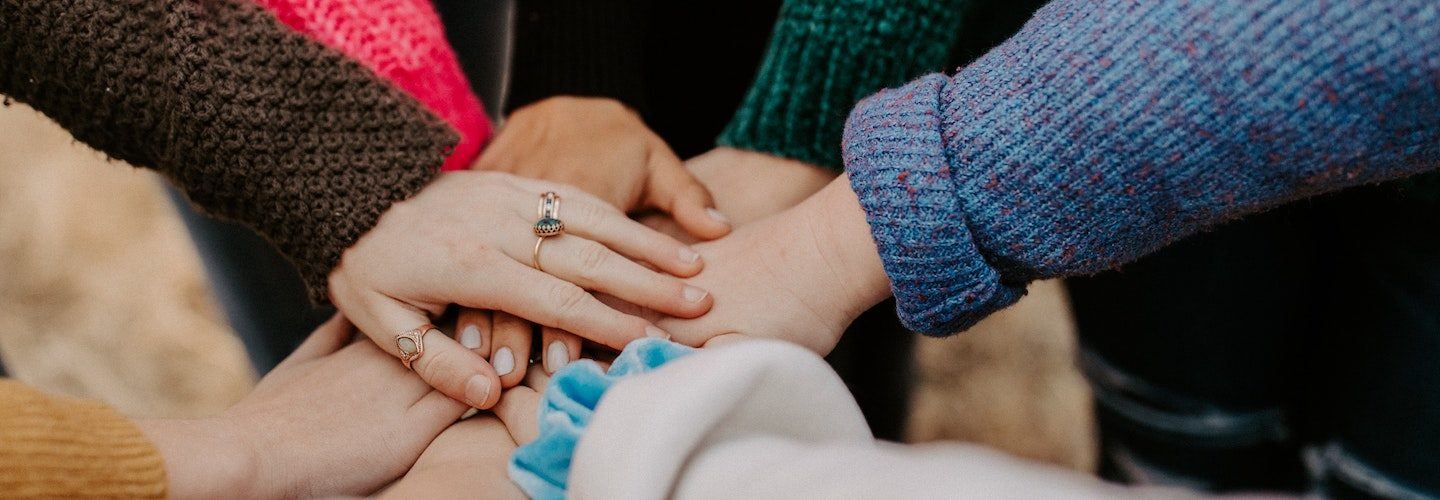Have you ever imagined what you would do if you won the lottery? In an open letter to MarketWatch’s personal-finance editor, Quentin Fottrell, an anonymous winner of the California lottery admitted that he barely touched the 55 million dollars he won (he only bought a truck and a house), and he didn’t tell anyone about his win. I can understand why he wouldn’t want to tell anyone, and Quentin responded that he could understand the urge to preserve anonymity, too. The winner also wrote that he didn’t believe in loaning money to friends, for fear of going broke. That admission resonated a bit less. In any case, I would imagine that winning that sum of cash brings a lot of pressure along with it—to do something “meaningful” and “useful” with the winnings. In his letter, the winner asked if he was wrong by not telling anyone about his stroke of luck and fortune. Quentin, in his response, offered a deceptively straight-forward suggestion, about how to navigate the pressure of such wealth and consider putting the funds to use: Quentin wrote that there is no need for the winner to tell anyone if he doesn’t want to, but that he may consider where he wants his estate to give the money. Pick a cause that means something to him and support it.
There seems to be an innate wiring for the act of giving—it’s one expression of the adaptive drive for prosocial behavior. There is ongoing research and some debate about the role of altruistic behavior in evolution, but social psychology research makes an argument that relates prosocial behavior with increased social connection and enhanced subjective well-being. Empirically speaking, I have found that philanthropic work positively influences personal health and well-being.
In my conversation with John Arnold on the podcast, we not only spoke about how he made his wealth trading natural gas but also how he approaches giving that wealth away. John co-founded Arnold Ventures, the philanthropic organization he started with his wife Laura, which is steered by what John calls strategic philanthropy. Philanthropic donations that are strategic are ones that target root causes, which have the ability to create structural change—either solving today’s problems or preventing problems from developing tomorrow. In essence, this kind of philanthropic work evaluates the effectiveness of intervention programs.
Even though most of us will not set up philanthropic foundations like John’s, many of us seek ways to add value and contribute to society as intelligently as possible. To this end, there are a few points I keep in mind from my discussion with John. The first takeaway is that charitable giving is all relative to the resources that someone has. For example, individuals who partake in the Further Pledge movement give away income that is in excess of what they calculate as the “living allowance” they need. The framework recognizes that the value of the dollar donated is higher than the value spent by the person who has enough to live. The second takeaway is to thoughtfully identify the community to which someone gives time and financial resources. As a rule of thumb, we are generally more informed about the communities we are a part of, which makes for more intelligent giving. The last piece of guidance I took from the conversation is that there is no “right” way to define community nor is there a “right” answer to how someone improves their community. The definition of community is flexible and not necessarily defined by geographic proximity; the Veterans’ community, for example, can span the world.
If you know anything about me, you probably know how much I love frameworks. For me, the right framework allows me to identify and stay on track with my objectives, serving as a helpful way to construct my thinking. So I was particularly attracted to the process and rigor with which John and Laura approach their philanthropy. While their giving is far different in scale and content, their analytical approach has had a profound impact on how my wife and I approach our own giving. I share our personal approach below, as one example of a strategic framework. But, to reiterate, there is by no means a “right” way to improve your community of choice. This is just one approach that resonates with us, and I encourage anyone who wants to give, regardless of amount, to explore what resonates with them. We structure our giving by choosing projects that fall within one of three categories, each shaped by a guiding principle for change. The first category of giving is to translational biomedical research that would otherwise not be funded by standard channels (e.g., NIH, industry), either because such research is deemed too risky, because it has no clear potential for commercialization, or because it’s simply underfunded. We specifically look for projects that are seeking to answer questions that will lead to a change in clinical practice within about 5 years. The second category of giving is to the overhead of organizations that we believe are doing amazing work. This sounds counterintuitive—most people are loath to fund the overhead of an organization, even when they are doing great work—but that’s exactly why we think paying the salaries of people doing amazing work is so important. Dan Pallotta raises a similar point in his 2013 TED Talk in which he communicates a different way to think about non-profits. Among other cogent points, Dan argues that a charity’s overhead is an important aspect of the organization, signaling what it needs to grow and succeed, as opposed to an avoidable income sink that catabolizes “the cause.” The reality is that without charity employees, among other aspects that comprise overhead, all the project funding in the world is meaningless. So when we find people doing amazing work, we aim to figure out a way to give them a raise and take away the stress of having to fundraise for their own salaries. Finally, our third category of giving is directly to people or small projects where the dollar amount can make a step-function change in an individual person’s life. Funding even one such project a year that can change the course of a person’s life by giving them the means to access something they couldn’t otherwise afford, feels more meaningful than contributing the same dollar amount to an amorphous pool of money without a clear line of sight into the lives impacted.
Again, I am not suggesting that anyone else adopt these categories of giving in the way we have formulated our own strategic principles. They simply represent how we define the communities we want to support and how we go about doing so. With that said, I think it makes sense to deliberately consider strategic principles that resonate for you in order to make the greatest impact. The framework for giving may begin with identifying a community that speaks to you, then selecting aspects of that chosen community which require change, or areas that could use support to avoid future problems. To me, the act of giving as an individual (as opposed to an organization) has less to do with the absolute amount given than with how the donation is used. Irrespective of the order of wealth one has or the absolute size of the charitable donation one makes, the leading question doesn’t have to change: where could your dollars be most helpful? Stated another way, how much good are we doing that wouldn’t have been done otherwise?






This is a very common approach, and I’m sure you’ll get a lot of people who agree, but as with many things, the devil is in the details. There are tons of nonprofits that are highly ineffective, and others that are downright egregious. Evaluating organizations isn’t easy, and in fact, there are companies set up for the very purpose of evaluating charities’ efficacy.
One organization that does this is givewell.org, which not only evaluates charities, but you can donate to them, and have them direct your giving to those charities that meet your criteria.
While givewell is a good org, it’s really a subset of a broader platform called a “Donor Advised Fund,” which is where a much larger organization pools your money along with many other donors to provide even greater impact. Doing a simple google search will show many such funds, most of which are managed by larger banks and investment firms. You can designate industries, sectors, and many other horizontal or vertical strata to designate. Naturally, talking with their management team is the best way to learn how to do this.
I can’t help but also add my own personal note: I never give directly to individuals need, such as the homeless, etc., and instead, give to organizations that help them. As peter pointed out, the best way to improve the world is through systemic changes and improvement — just like your personal body’s health and longevity.
Thank you Peter. Ever since your conversation with Dr. Tom Catena, my wife and I have done what we can to support African Mission Healthcare (https://africanmissionhealthcare.org/). Thank you for sharing his story with us.